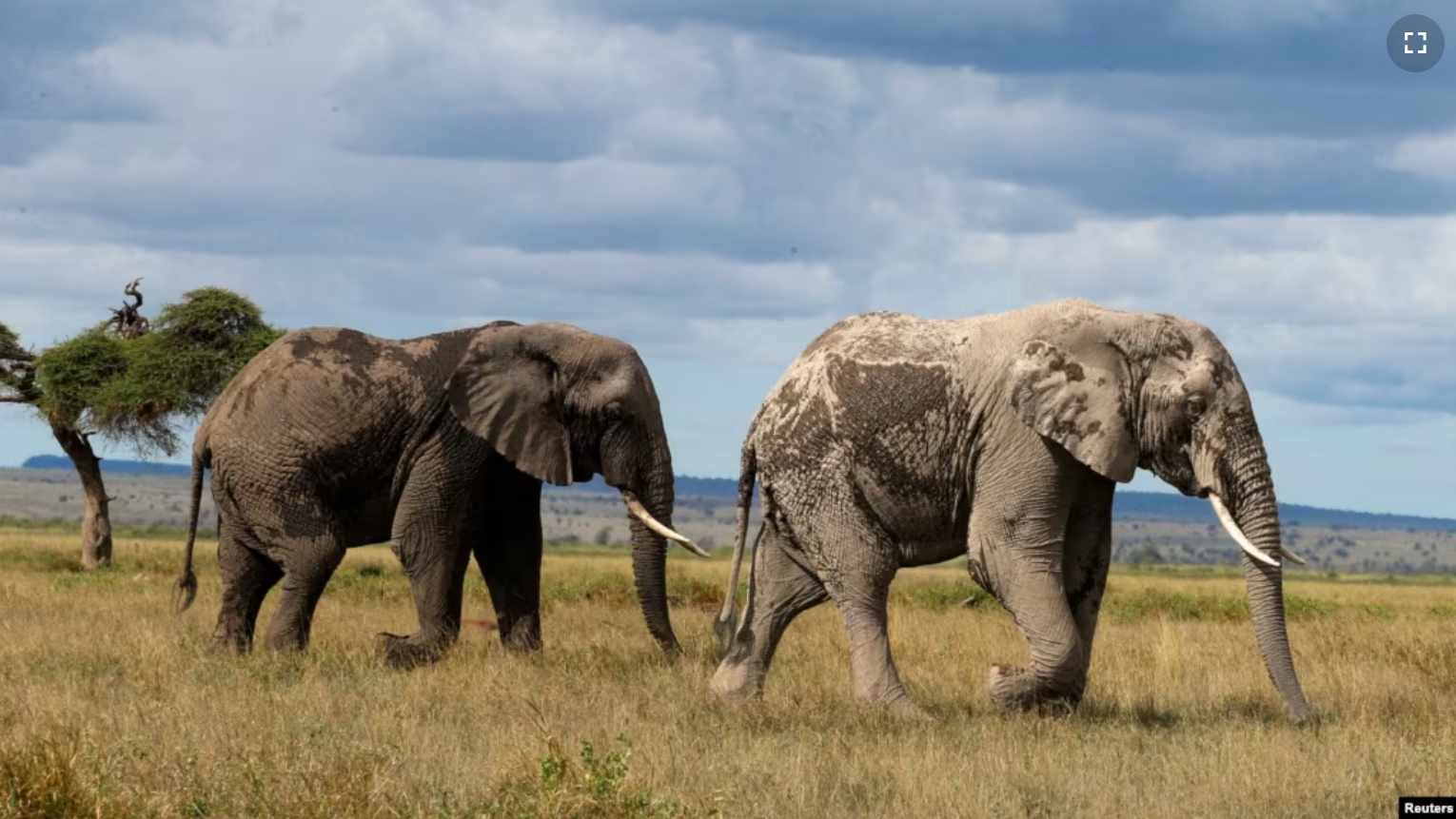African elephants are Earth’s largest land animals. They are very intelligent and highly social. A recent study also says that numbers of African elephants sharply decreased over about fifty years.
The researchers described their work as the most comprehensive study of the two African elephant species – the savanna elephant and forest elephant. The study used data gathered at 475 areas in 37 countries from 1964 through 2016.
It found that savanna elephant populations fell by about 70 percent on average and forest elephant populations dropped by about 90 percent on average. The researchers mainly blame the decline on illegal hunting and the loss of the animals’ natural environment.
However, the report also says populations of each species increased in other places because of wildlife protection programs.
“A lot of the lost populations won’t come back, and many low-density populations face continued pressures. We likely will lose more populations going forward,” said George Wittemyer. He is a Colorado State University professor who works with the conservation group Save the Elephants. Wittemyer helped lead the study, published in the Proceedings of the National Academy of Sciences.
Illegal hunting of animals is also called poaching. Elephant poachers usually kill the animals in order to remove their tusks. These prized objects are then sold on illegal markets, driven mostly by demand in China and other parts of Asia.
The research says agricultural expansion is mainly responsible for the loss of elephant habitat, meaning the natural areas where the animal lives.
Poaching has mostly affected forest elephants. Its population is estimated to be about one-third that of savanna elephants. Poaching has been especially damaged populations in northern and eastern Africa, such as Mali, Chad and Nigeria. But, in southern Africa, elephant populations rose at 42 percent of the studied areas.
“We have seen real success in a number of places across Africa, but particularly in southern Africa, with strong growth in populations in Botswana, Zimbabwe and Namibia,” Wittemyer said. He credited conservation efforts by governments and independent organizations for the growth.
The study did not provide a continent-wide population count. It says the different methods used for counting over different periods made it impossible to keep a unified count of the African elephants. Instead, it estimates population trends in each of the studied areas.
A separate report from conservationists places the population of African elephants at between 415,000 and 540,000 as of 2016, the last year of the study period. It remains the most recent comprehensive continent-wide estimate.
Colorado State’s Wittemyer said, “While the trends are not good, it is important to recognize the successes we have had and continue to have. Learning how and where we can be successful in conserving elephants is as important as recognizing the severity of the decline they have experienced.”
I’m Caty Weaver.
Will Dunham reported this story for Reuters. Hai Do adapted the story for Learning English.
____________________________________________________
Words in This Story
comprehensive – adj. including many, most or all
species – n. a group of animals or plants that are similar
decline – n. the change to a lower number
trend – n. the general direction of change
